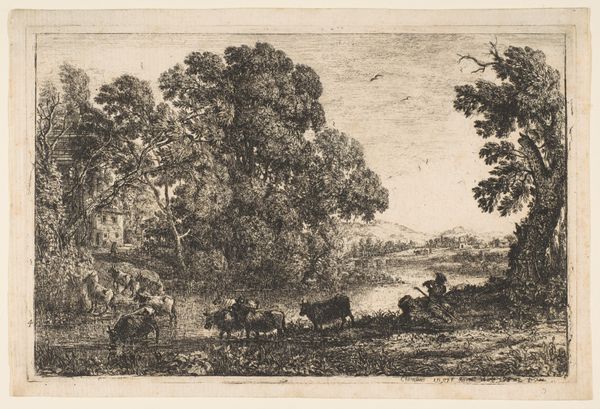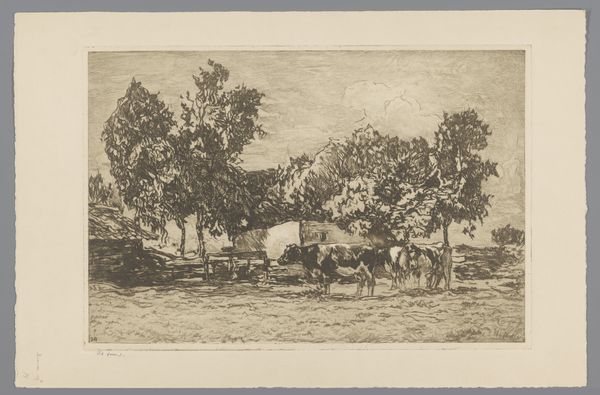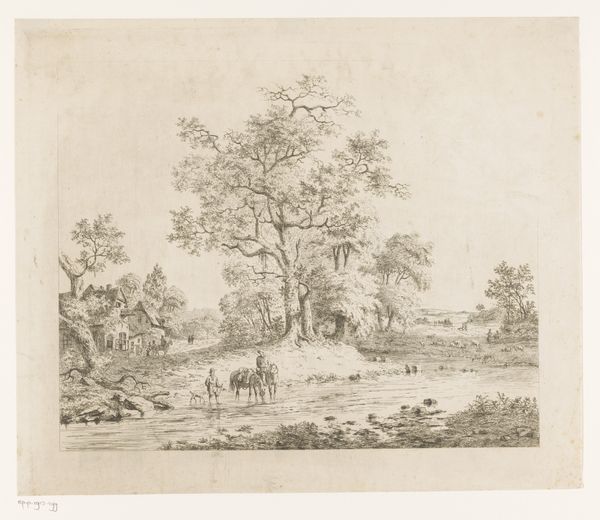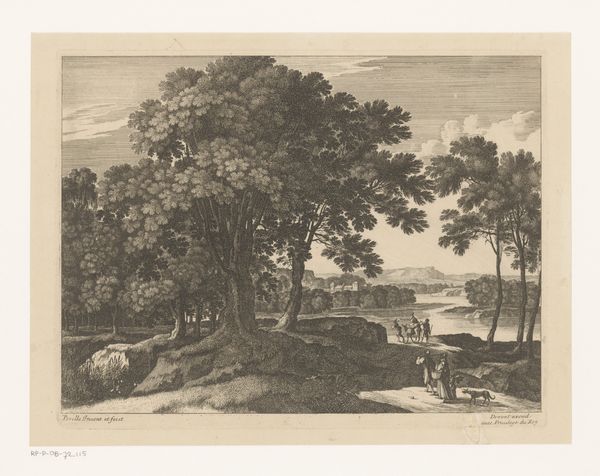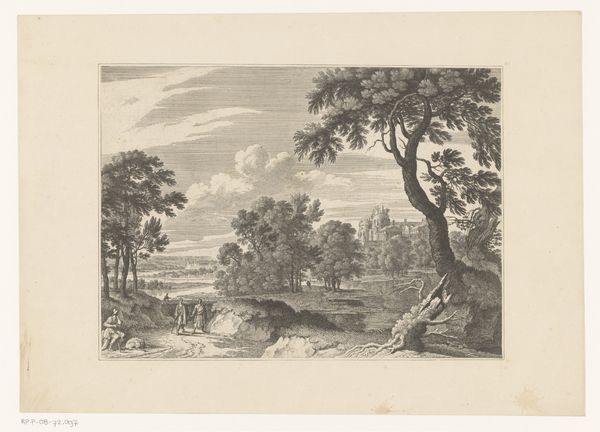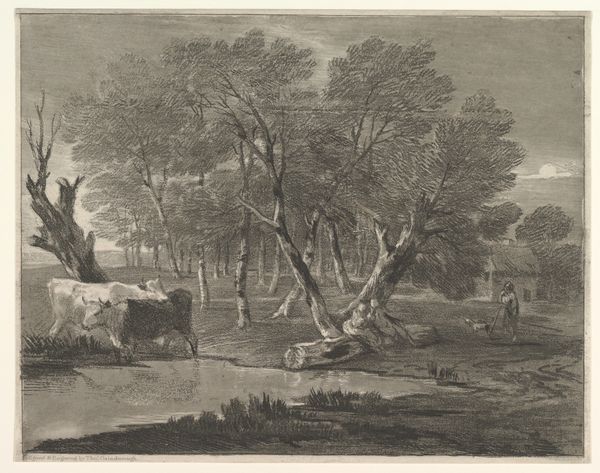
drawing, print, etching, paper
#
drawing
#
16_19th-century
# print
#
etching
#
landscape
#
etching
#
paper
#
realism
Dimensions: 252 × 338 mm (image); 305 × 378 mm (plate); 322 × 390 mm (sheet)
Copyright: Public Domain
Editor: Charles-François Daubigny’s "The Ford," an etching from 1865, really captures a peaceful, rural scene. The use of line is really interesting here - how does that technique contribute to the overall impression of the work? Curator: Indeed. Note how Daubigny employs etching, scratching lines into a metal plate to define forms and texture. Observe how the density and direction of these lines vary. Do you see how darker areas have closely spaced, often cross-hatched lines, whereas lighter areas have fewer, more delicate lines? This skillful manipulation creates tonal depth and defines spatial relationships. Editor: Yes, now I see it. So, is it fair to say that the value contrast created in "The Ford" defines not just the light but also gives the image its compositional structure? Curator: Precisely. The interplay of light and shadow isn't just descriptive; it actively shapes our perception of the subject. Look closely at the rendering of the trees versus the open water. Note the directionality of the line to give you form, depth, shadow. Editor: It’s like the lines build the whole world of the print. That's quite clever! Thanks, this was really insightful. Curator: My pleasure. By carefully analyzing the formal elements, we gain a deeper understanding of Daubigny’s artistry.
Comments
No comments
Be the first to comment and join the conversation on the ultimate creative platform.

